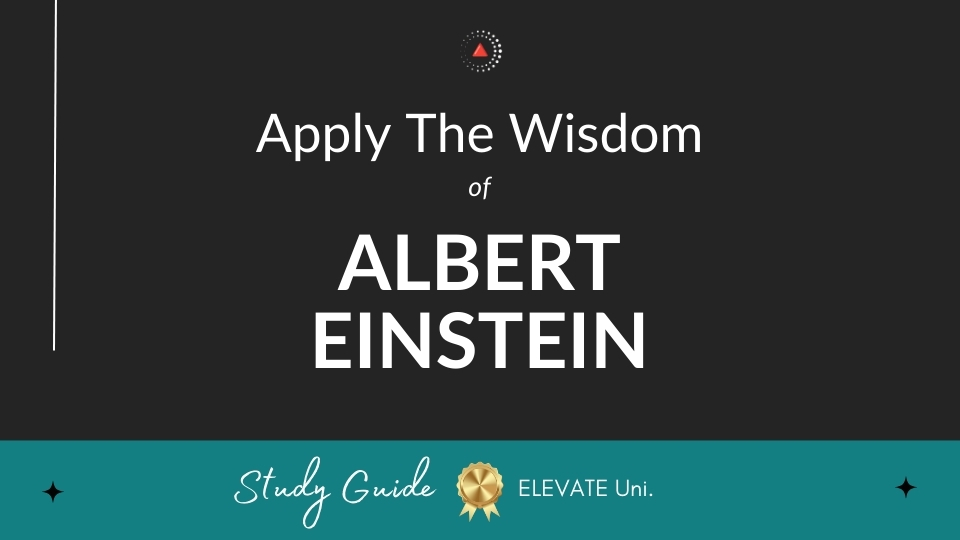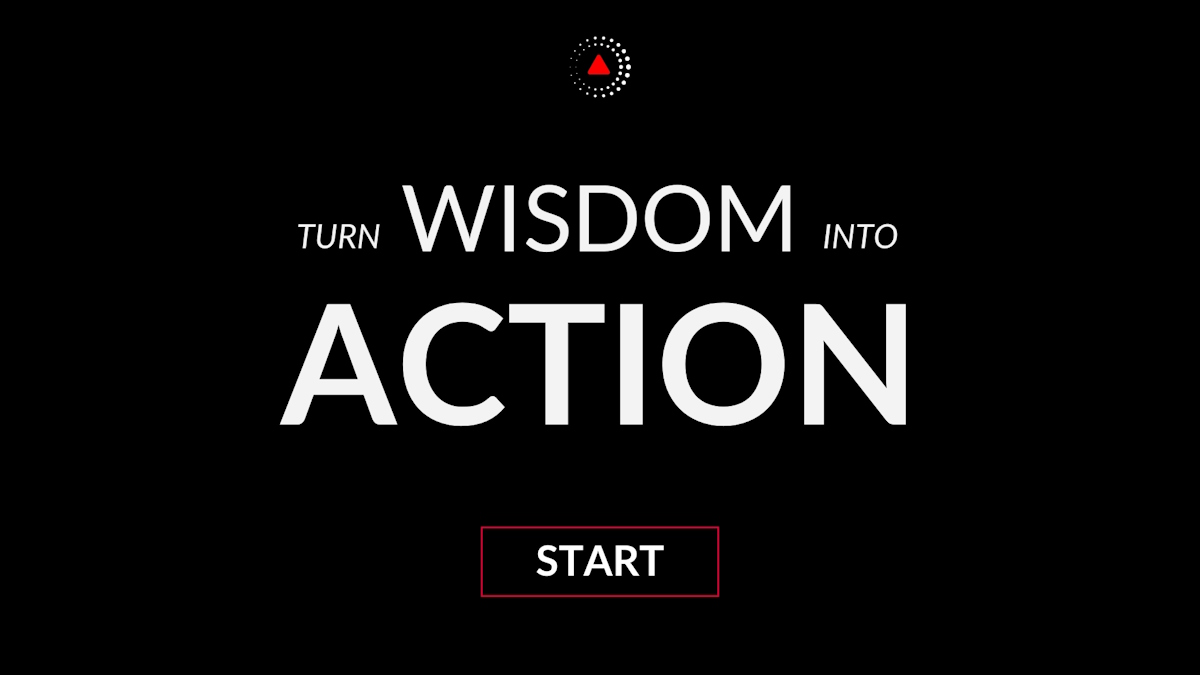You can never solve a problem on the level on which it was created.
What's the meaning of this quote?
Quote Meaning: This quote delves into the concept of problem-solving and suggests that the resolution of an issue often requires transcending the perspective or the level at which the problem originated. At its core, it implies that a problem arises from a certain level of understanding, context, or mindset, and attempting to address it solely within that framework may prove futile. Instead, it advocates for a shift in perspective or approach, indicating that solutions lie beyond the confines of the problem's origin.
To grasp the essence of this quote, let's consider an analogy. Imagine a maze where each level represents a different challenge or problem. If you encounter an obstacle on a particular level and attempt to solve it using the same strategies and pathways that created the obstacle, you're likely to find yourself stuck in a loop, unable to progress. However, if you elevate yourself to a higher vantage point, you may gain a broader view of the maze, allowing you to perceive alternative routes or solutions that were previously hidden.
In practical terms, this quote encourages us to adopt a mindset of creativity, innovation, and flexibility when confronted with challenges. It urges us to question the assumptions and limitations of the problem's original context and explore new perspectives or methodologies. For instance, in the realm of science and technology, many groundbreaking discoveries have been made by thinking beyond the established paradigms and conventions of their respective fields.
Moreover, the quote suggests that true problem-solving often requires a multidisciplinary approach. By integrating insights and methodologies from diverse disciplines, we can generate novel solutions that surpass the constraints of any single perspective. This interdisciplinary approach fosters innovation and allows us to tackle complex problems that defy conventional solutions.
Furthermore, the quote emphasizes the importance of introspection and self-awareness in problem-solving. It encourages individuals and organizations to examine their own biases, assumptions, and entrenched patterns of thinking that may be contributing to the problem. By acknowledging and transcending these limitations, we open ourselves to new possibilities and avenues for resolution.
Overall, this quote serves as a reminder that effective problem-solving demands a willingness to break free from the constraints of familiar thinking patterns and embrace a broader, more expansive perspective. It invites us to rise above the level at which the problem was created and explore innovative approaches that lead to meaningful solutions.
Who said the quote?
The quote "You can never solve a problem on the level on which it was created." is often attributed to Albert Einstein (Bio / Quotes). Albert Einstein was a German physicist and Nobel Prize winner who is widely regarded as one of the most influential scientists in history.
Applying the quote to your life
Unlock Einstein's wisdom and apply it to your life by getting the in-depth Albert Einstein Workbook & Study Guide, complete with top quotes, insightful commentary, reflective questions, and practical uses for everyday life.
To apply more wisdom, get the All-Access Pass, which includes hundreds of study guides from the world's top minds. These include deep insights from individuals such as Nelson Mandela, Steve Jobs, and Albert Einstein, as well as some of the top authors and personal development books.
What are Albert Einstein's Best Quotes?
Watch on Elevate's YouTube channel and be sure to subscribe for more wisdom and insights from the world's top minds.

Subscribe on YouTube to get the latest quote videos delivered straight to you:
Is there a historical example that illustrates the message of the quote?
A powerful historical example of the quote "You can never solve a problem on the level on which it was created" is the Cuban Missile Crisis of 1962. During this critical moment in the Cold War, the world teetered on the brink of nuclear conflict due to the Soviet Union's placement of nuclear missiles in Cuba, just 90 miles from the U.S. coastline. This tense situation was driven by a complex mix of geopolitical rivalries, ideological conflicts, and a high-stakes arms race.
Initially, both the United States and the Soviet Union were entrenched in their positions, each viewing the crisis through the lens of their own strategic and political objectives. The direct approach—threats, ultimatums, and military readiness—would only have escalated the conflict, increasing the risk of a catastrophic war.
The resolution came when President John F. Kennedy and Soviet Premier Nikita Khrushchev moved beyond their immediate positions and engaged in a more profound and diplomatic negotiation process. Instead of simply doubling down on their respective stances, Kennedy and Khrushchev sought to address the underlying issues that had caused the crisis: mutual distrust, the arms race, and the broader context of U.S.-Soviet relations.
Kennedy agreed to a secret deal to withdraw U.S. missiles from Turkey, which were a source of Soviet concern, while Khrushchev publicly committed to removing Soviet missiles from Cuba. This diplomatic resolution, achieved through high-level negotiations and a willingness to move beyond initial positions, demonstrates that addressing the root causes of a problem requires elevating the discourse to a higher level of understanding and cooperation.

How can the quote be applied in a real-life scenario?
Applying the quote "You can never solve a problem on the level on which it was created" to real-life scenarios involves recognizing when a problem cannot be resolved through the same methods or mindset that created it.
Consider a workplace conflict where two departments are in constant disagreement over resource allocation. If the solution is approached solely through the same lens of competition and blame that led to the conflict, the resolution will likely be superficial and short-lived. For example, if both departments keep blaming each other for resource shortages without addressing the underlying issues of communication, misalignment of goals, or unclear priorities, the conflict may persist or even worsen.
To resolve the problem effectively, one must elevate the approach by fostering a collaborative environment and seeking common goals. This could involve setting up cross-departmental meetings to discuss shared objectives, creating a joint task force to improve resource planning, and establishing clear communication channels. By addressing the conflict from a higher level—focused on overall organizational goals and team cohesion rather than individual grievances—solutions that genuinely resolve the underlying issues can be developed.
In personal relationships, this principle is similarly applicable. If two people are struggling with recurring arguments about household responsibilities, addressing the problem by simply redistributing tasks may not suffice. Instead, they might need to explore deeper issues like unspoken expectations or lack of appreciation. By engaging in open and empathetic dialogue and working together to redefine responsibilities in a way that acknowledges both partners' needs and concerns, they can solve the problem more effectively and build a stronger relationship.
In essence, moving beyond the level at which a problem was created involves a shift in perspective and approach, aiming to address the root causes and fostering a deeper understanding to achieve sustainable solutions.
Chief Editor
 Tal Gur is an author, founder, and impact-driven entrepreneur at heart. After trading his daily grind for a life of his own daring design, he spent a decade pursuing 100 major life goals around the globe. His journey and most recent book, The Art of Fully Living, has led him to found Elevate Society.
Tal Gur is an author, founder, and impact-driven entrepreneur at heart. After trading his daily grind for a life of his own daring design, he spent a decade pursuing 100 major life goals around the globe. His journey and most recent book, The Art of Fully Living, has led him to found Elevate Society.



























